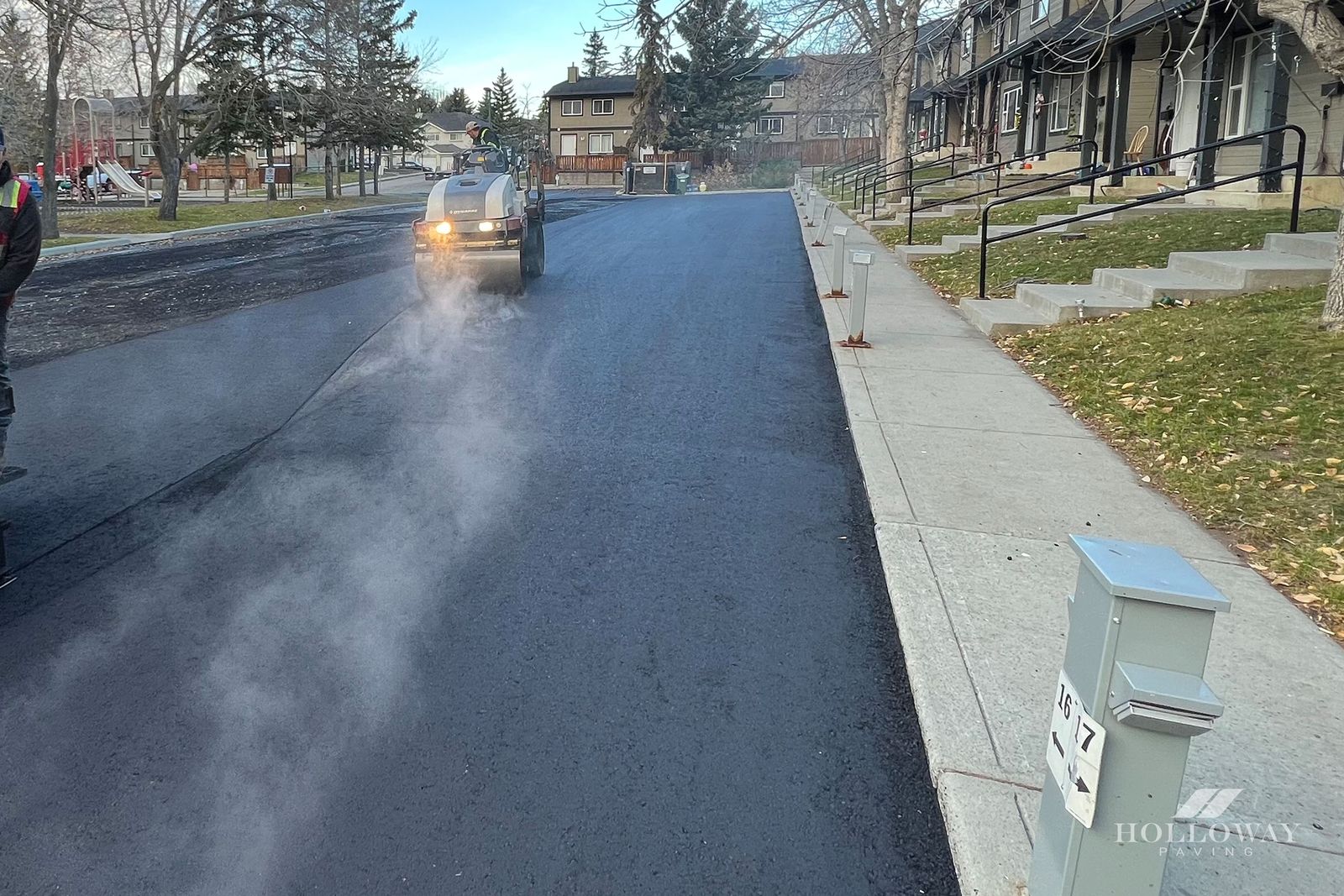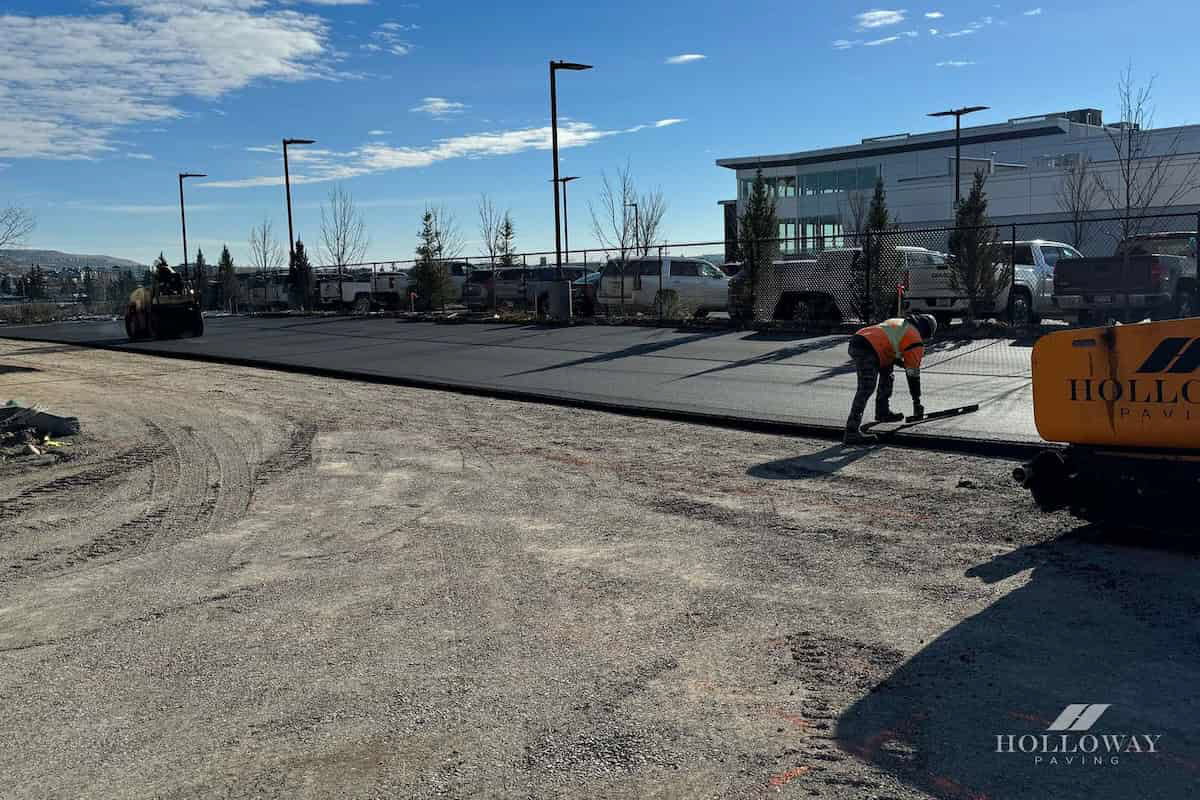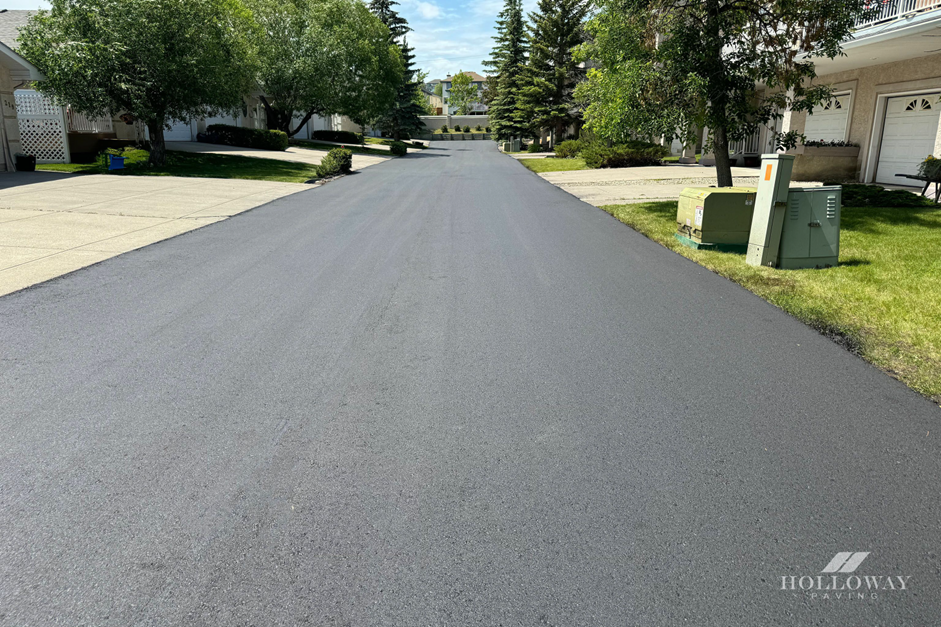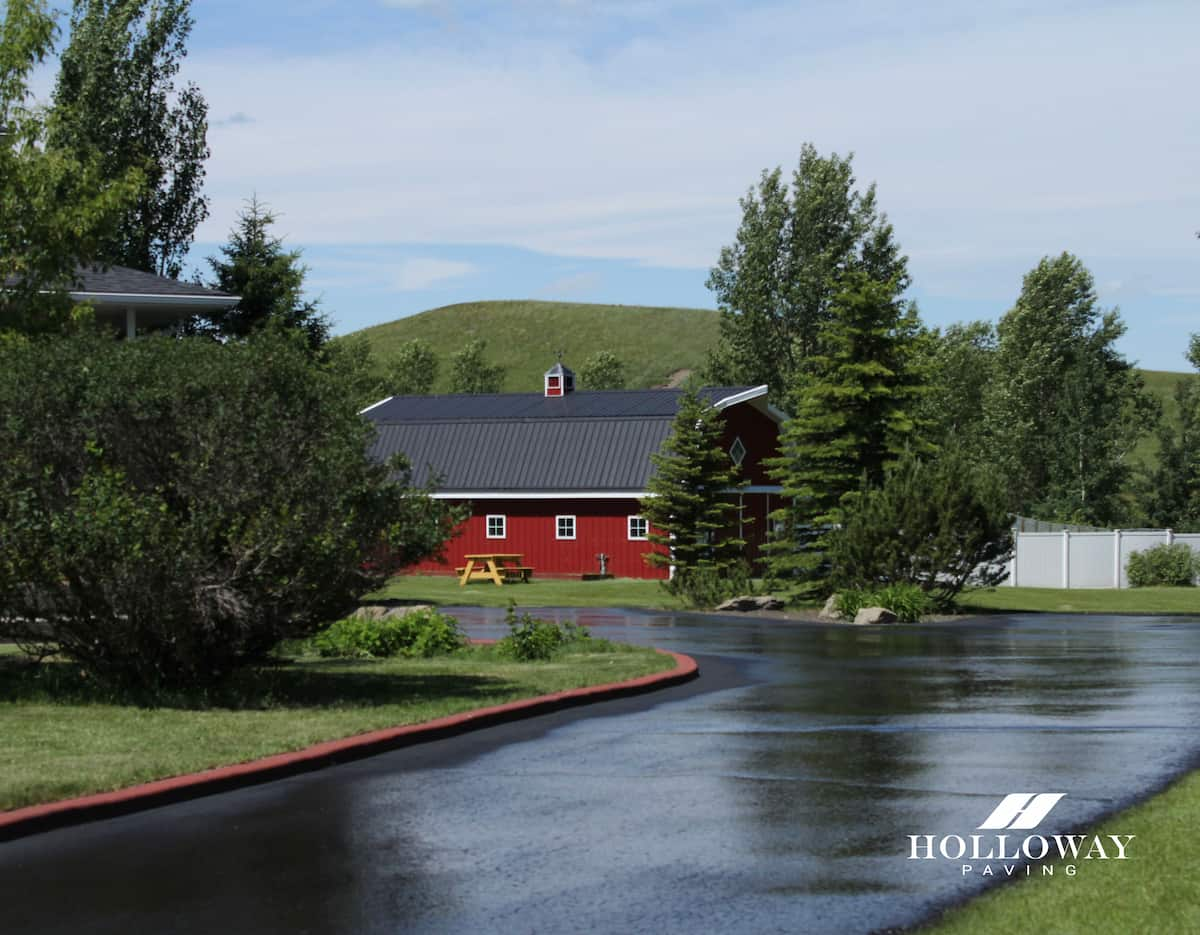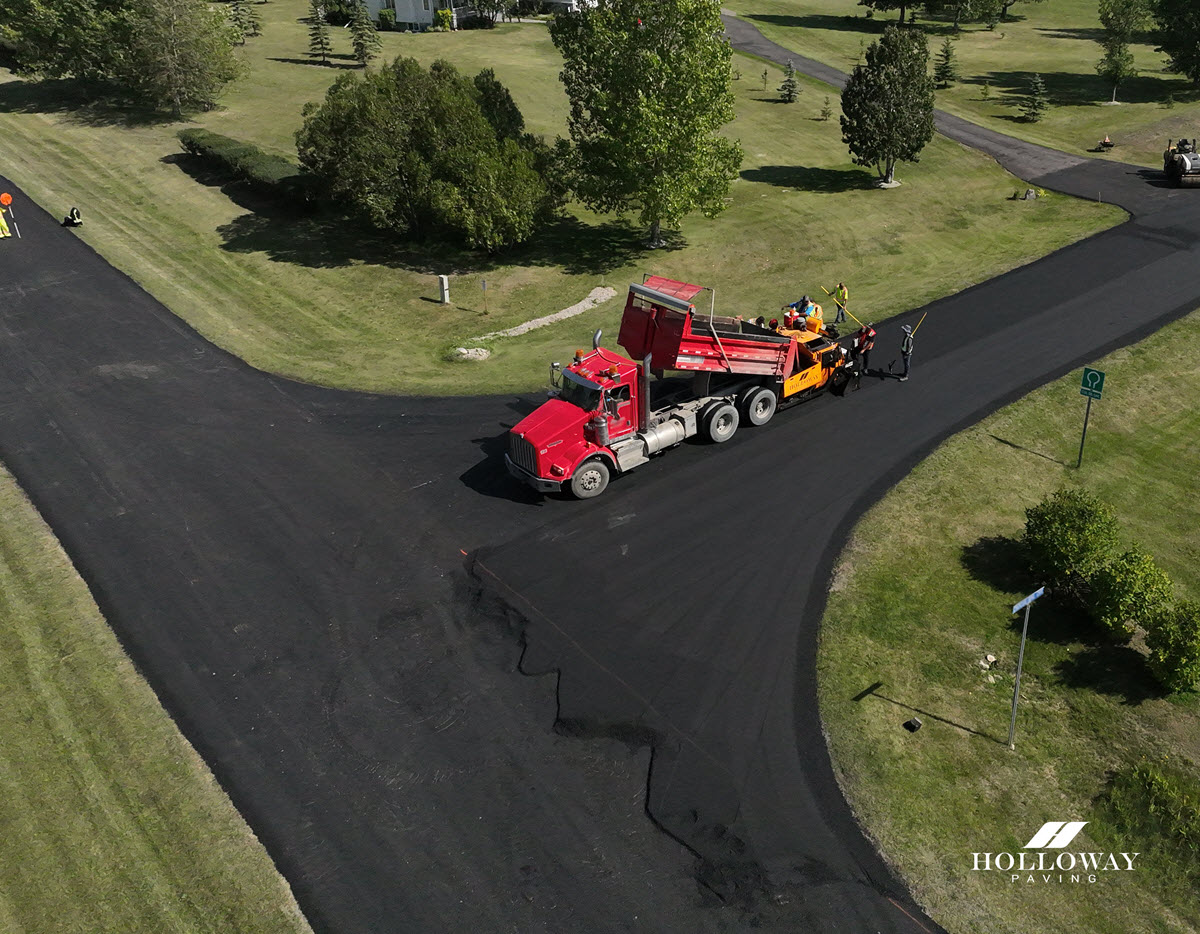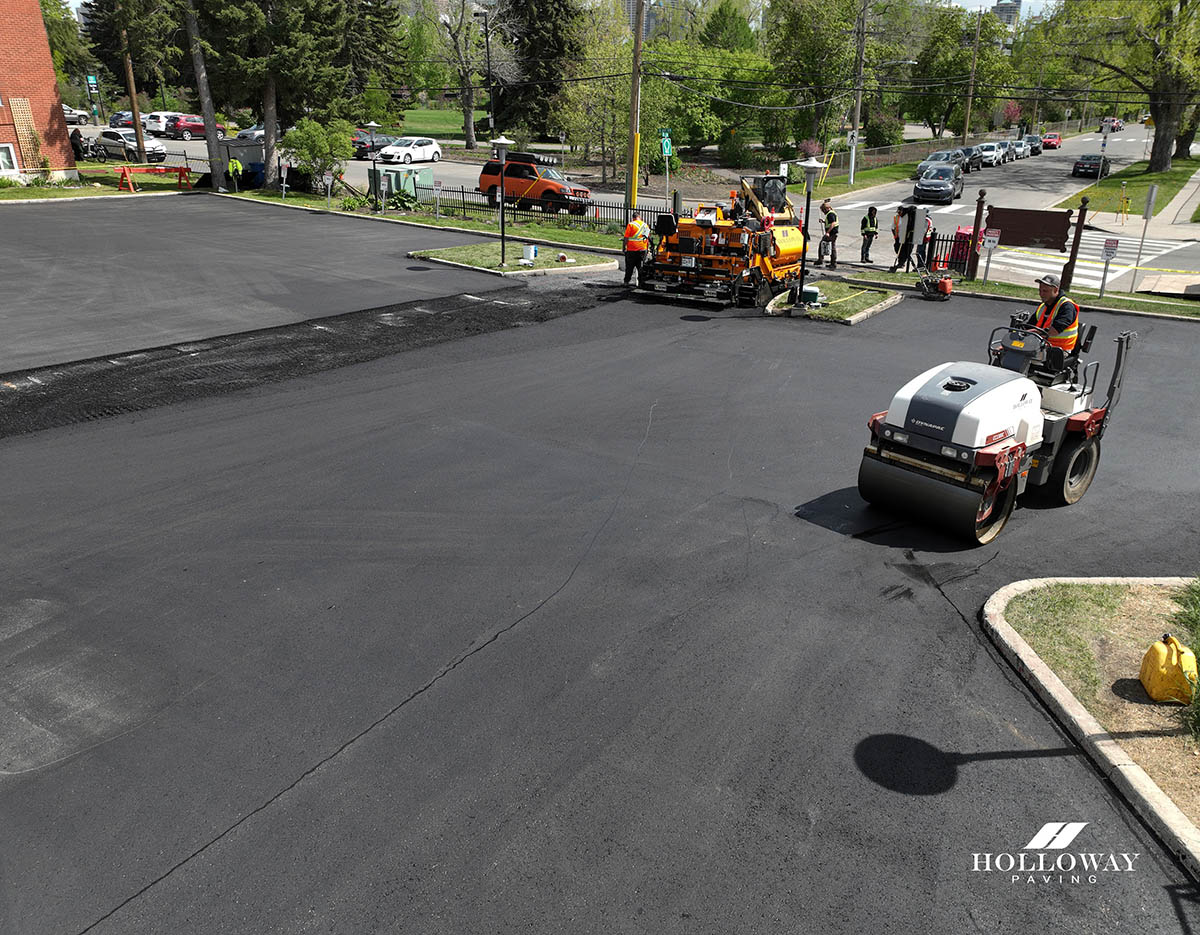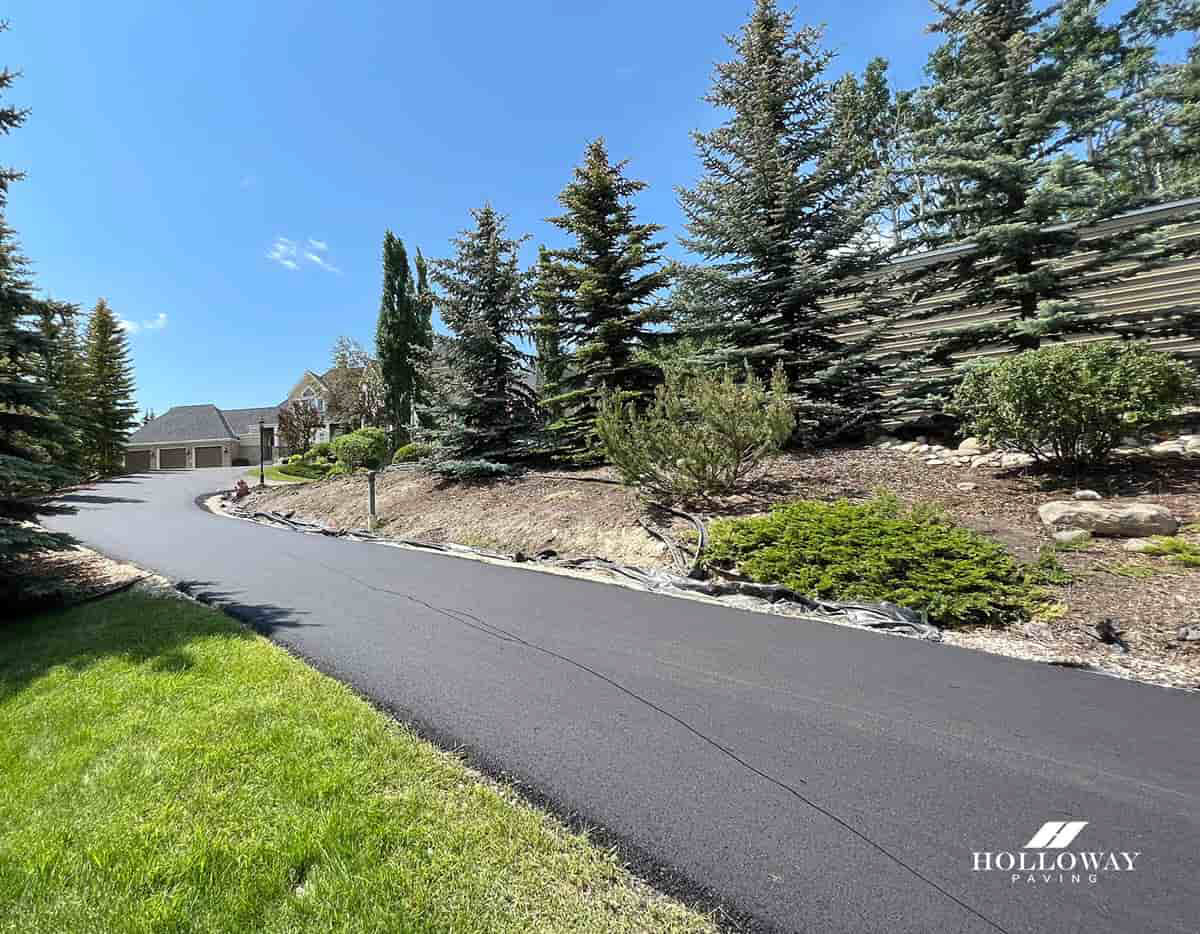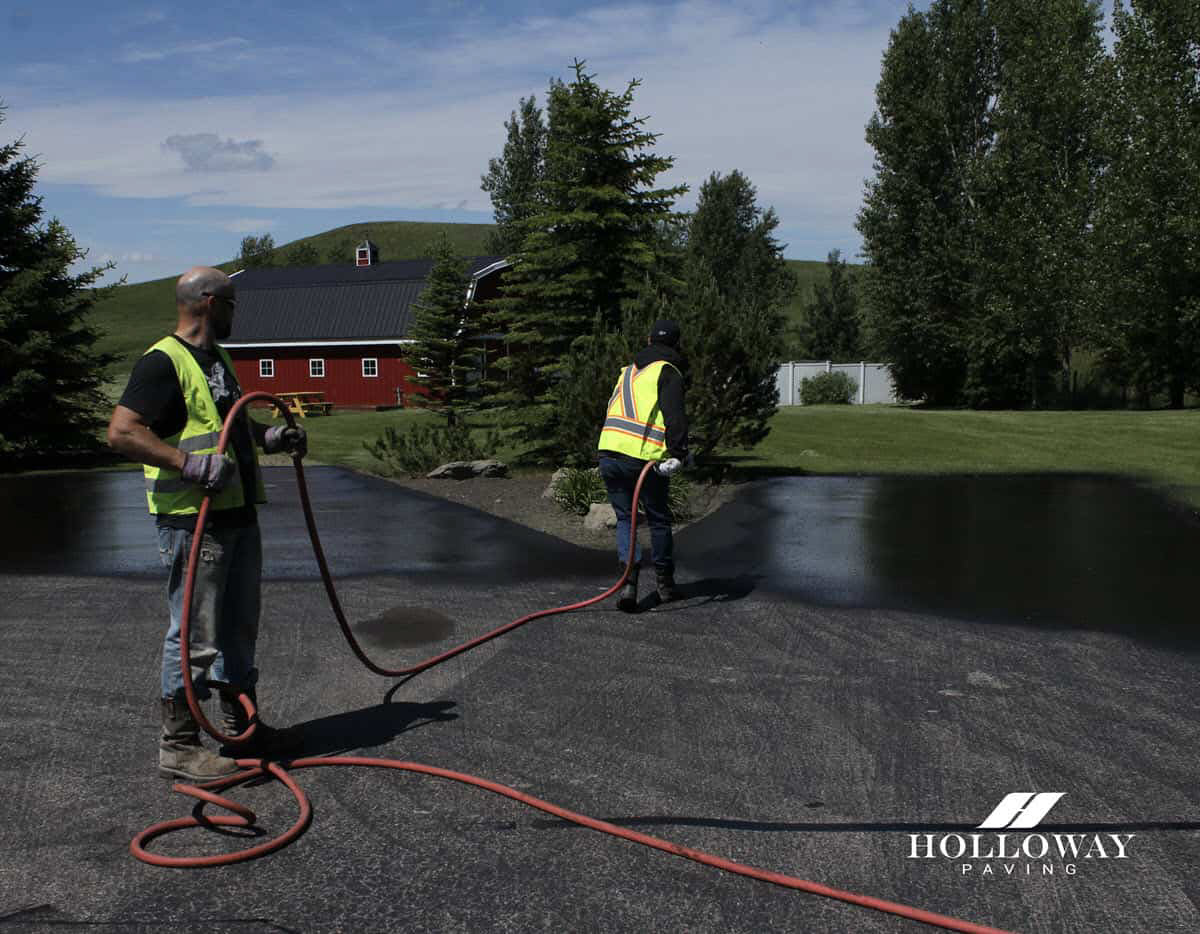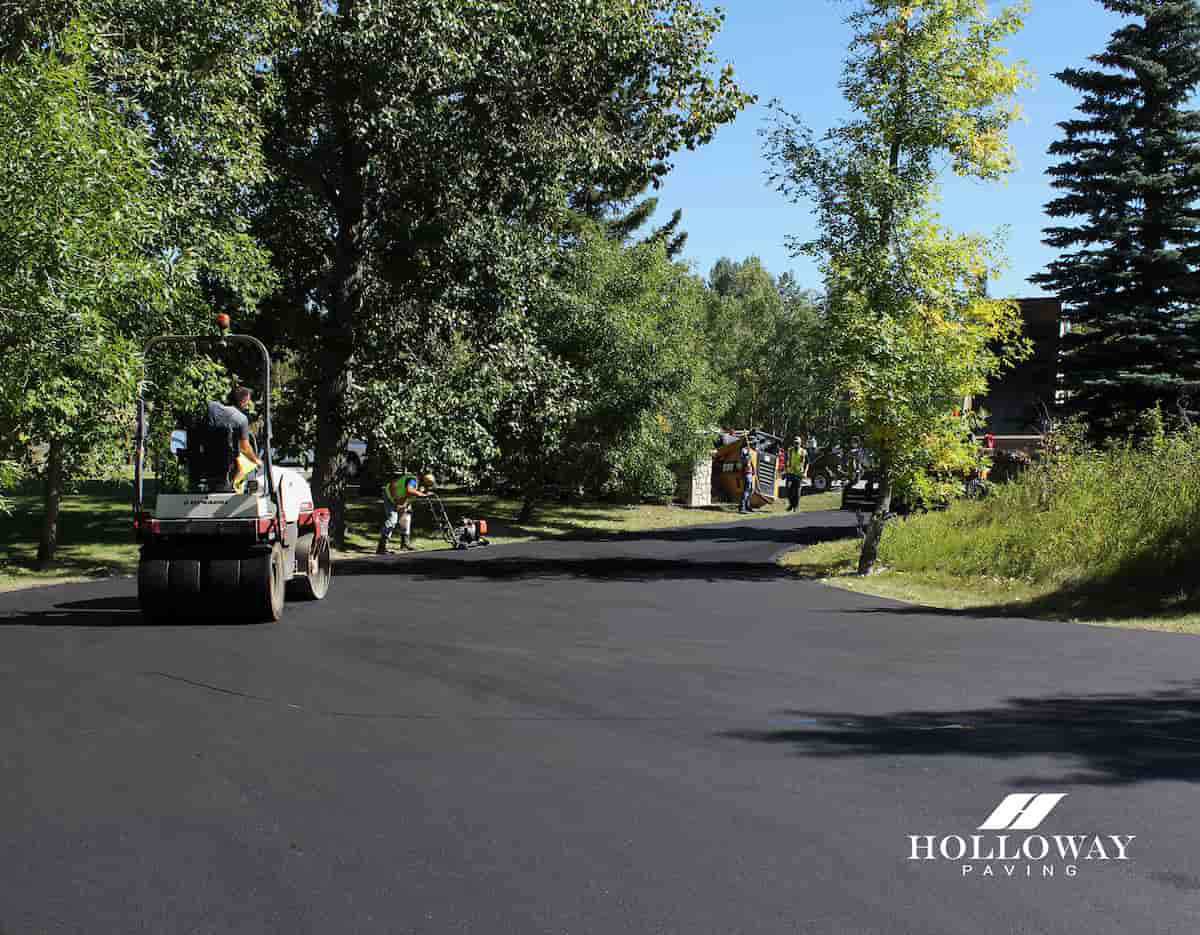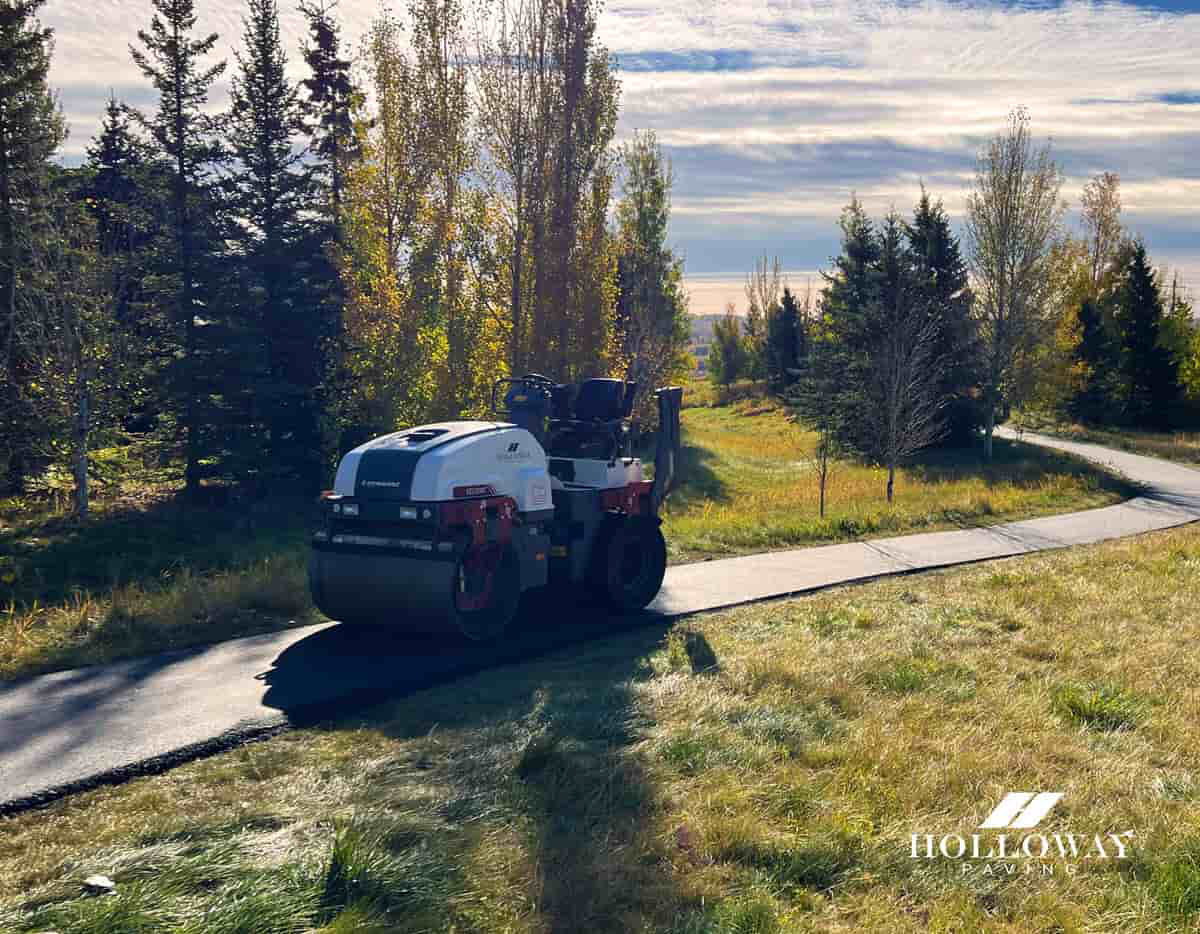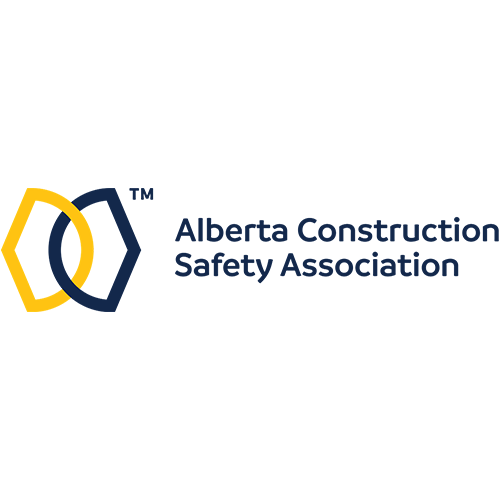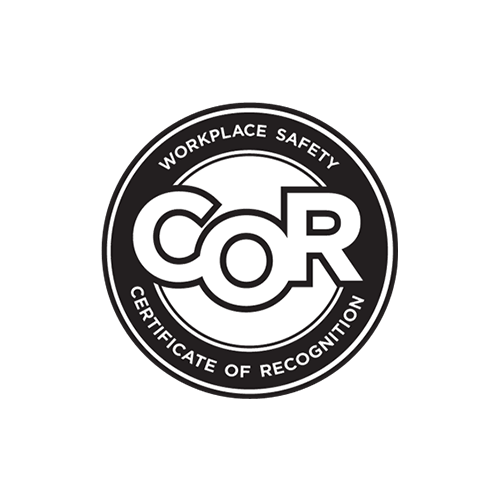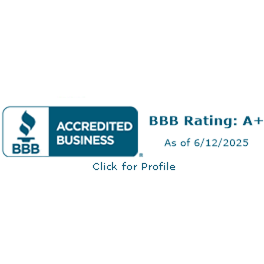Are you looking to upgrade the curb appeal of your home or business? Pathway paving provides a great opportunity to add a touch of sophistication that will draw the eye for years to come. There are two popular materials used in pathway paving: concrete and asphalt. Each material has its own benefits and drawbacks, making it essential for homeowners and businesses to be informed about their options before deciding which material is most suited to their needs. To help you make the right decision, we’ll take an in-depth look at both concrete and asphalt pathways. Let’s get started.
Concrete Pathways
Concrete paving is a cost-effective option when compared to the expense of interlocking tiles or pavement and can be a great addition to any outdoor space.
One of the primary advantages of using concrete pathways is their durability. They are also easy to clean and maintain with just a basic broom or pressure washer.
On the other hand, a major disadvantage is that concrete can be slippery when wet, making it an occasional hazard for pedestrians. In addition, concrete pathways that aren’t properly installed and maintained can crack due to soil movement or changes in temperature.
Because of concrete’s permanence, it’s difficult to make adjustments down the road if you decide you want a different style or design for your pathway. There’s no denying that concrete paving also takes more time to install than asphalt.
Here’s a quick breakdown of the pros and cons of concrete paving.
Pros of Concrete Paving:
- Durability – Concrete paving is extremely durable and can last for many years without needing to be replaced.
- Low Maintenance – Unlike asphalt paving which needs to be resealed periodically, concrete does not require as much maintenance.
- Versatility – Concrete is versatile enough to be used in a variety of applications, such as driveways, patios, walkways, and more.
Cons of Concrete Paving:
- Installation Time – Installing concrete can take much longer than other materials due to the need for drying time between each layer of material being applied.
- Cracking – Although concrete is durable, it can still crack due to shifting soil or other environmental factors.
- Costly Repairs – Over time, concrete can lead to unsightly cracks and require replacement in order to keep the area looking nice.
For added beauty, safety, and convenience, concrete pathways are an excellent choice for any outdoor space.
Asphalt Pathways
The strength, durability, and classic look of asphalt pathways make them one of the most popular choices. Aside from their attractiveness, asphalt pathways can also be cost-effective, low maintenance, and easy to install.
Especially in Canadian weather, asphalt is usually seen as the safest option for walkways due to its dark colour. This allows snow and ice to melt more quickly compared to lighter surfaces like concrete. Additionally, it provides a smoother experience for walking, biking, or skating.
However, asphalt paving may be more expensive because of its maintenance needs, and it doesn’t have the same longevity as concrete. For example, seal coating should be done every three years to keep the asphalt in good condition—more often than if you were using concrete.
Here’s a quick breakdown of the pros and cons of concrete paving.
Pros of Asphalt Paving:
- Easy to install – Asphalt pathways are easy to install and can be completed quickly, allowing for a fast turnaround time from start to finish.
- Aesthetic appeal – The natural black colour of asphalt makes a striking impression.
Cons of Asphalt Paving:
- Maintenance – Asphalt pathways require regular maintenance, such as sealing, patching, and resurfacing, to maintain their appearance and prevent deterioration.
- Shorter Lifespan – Compared to concrete, asphalt typically only lasts up to 25 years (less if not properly maintained).
By applying sealant and performing regular maintenance, you can extend your asphalt paving’s lifespan significantly. However, asphalt requires continual upkeep in order to remain effective.
Count on Holloway Paving’s Expertise
Ultimately, it is up to you which pathway paving best fits your home or business. Careful consideration of your individual needs and the area you live in can help you make the right choice for your pathway. Whether you prefer concrete or asphalt pathways, Holloway Paving has you covered if you need excellent paving work done. We are a leading paving company in Calgary and Southern Alberta, having operated for over twenty years.
Our services extend from asphalt maintenance and repair to concrete construction, no matter the size or scope. Contact us today for a free quote on any of our services!
Are you looking to upgrade the curb appeal of your home or business? Pathway paving provides a great opportunity to add a touch of sophistication that will draw the eye for years to come.
There are two popular materials used in pathway paving: concrete and asphalt. Each material has its own benefits and drawbacks, making it essential for homeowners and businesses to be informed about their options before deciding which material is most suited to their needs.
To help you make the right decision, we’ll take an in-depth look at both concrete and asphalt pathways. Let’s get started.
Concrete Pathways
Concrete paving is a cost-effective option when compared to the expense of interlocking tiles or pavement and can be a great addition to any outdoor space.
One of the primary advantages of using concrete pathways is their durability. They are also easy to clean and maintain with just a basic broom or pressure washer.
On the other hand, a major disadvantage is that concrete can be slippery when wet, making it an occasional hazard for pedestrians. In addition, concrete pathways that aren’t properly installed and maintained can crack due to soil movement or changes in temperature.
Because of concrete’s permanence, it’s difficult to make adjustments down the road if you decide you want a different style or design for your pathway. There’s no denying that concrete paving also takes more time to install than asphalt.
Here’s a quick breakdown of the pros and cons of concrete paving.
Pros of Concrete Paving:
- Durability – Concrete paving is extremely durable and can last for many years without needing to be replaced.
- Low Maintenance – Unlike asphalt paving which needs to be resealed periodically, concrete does not require as much maintenance.
- Versatility – Concrete is versatile enough to be used in a variety of applications, such as driveways, patios, walkways, and more.
Cons of Concrete Paving:
- Installation Time – Installing concrete can take much longer than other materials due to the need for drying time between each layer of material being applied.
- Cracking – Although concrete is durable, it can still crack due to shifting soil or other environmental factors.
- Costly Repairs – Over time, concrete can lead to unsightly cracks and require replacement in order to keep the area looking nice.
For added beauty, safety, and convenience, concrete pathways are an excellent choice for any outdoor space.
Asphalt Pathways
The strength, durability, and classic look of asphalt pathways make them one of the most popular choices. Aside from their attractiveness, asphalt pathways can also be cost-effective, low maintenance, and easy to install.
Especially in Canadian weather, asphalt is usually seen as the safest option for walkways due to its dark colour. This allows snow and ice to melt more quickly compared to lighter surfaces like concrete. Additionally, it provides a smoother experience for walking, biking, or skating.
However, asphalt paving may be more expensive because of its maintenance needs, and it doesn’t have the same longevity as concrete. For example, seal coating should be done every three years to keep the asphalt in good condition—more often than if you were using concrete.
Here’s a quick breakdown of the pros and cons of concrete paving.
Pros of Asphalt Paving:
- Easy to install – Asphalt pathways are easy to install and can be completed quickly, allowing for a fast turnaround time from start to finish.
- Aesthetic appeal – The natural black colour of asphalt makes a striking impression.
Cons of Asphalt Paving:
- Maintenance – Asphalt pathways require regular maintenance, such as sealing, patching, and resurfacing, to maintain their appearance and prevent deterioration.
- Shorter Lifespan – Compared to concrete, asphalt typically only lasts up to 25 years (less if not properly maintained).
By applying sealant and performing regular maintenance, you can extend your asphalt paving’s lifespan significantly. However, asphalt requires continual upkeep in order to remain effective.
Count on Holloway Paving’s Expertise
Ultimately, it is up to you which pathway paving best fits your home or business. Careful consideration of your individual needs and the area you live in can help you make the right choice for your pathway.
Whether you prefer concrete or asphalt pathways, Holloway Paving has you covered if you need excellent paving work done. We are a leading paving company in Calgary and Southern Alberta, having operated for over twenty years.
Our services extend from asphalt maintenance and repair to concrete construction, no matter the size or scope. Contact us today for a free quote on any of our services!


